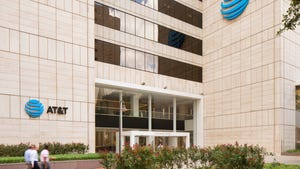Ericsson, EE say LTE broadcast big in converging marketEricsson, EE say LTE broadcast big in converging market
Infrastructure vendor Ericsson has said now that convergence is finally taking off, it is ready to bridge the gap between the broadcast and telecoms industries. Talking at a an event in London, the Swedish firm’s Head of Broadcast and Media Services Thorsten Sauer said the firm predicts by 2020 50% of all content viewed will be on mobile devices and on-demand.
March 19, 2015

Infrastructure vendor Ericsson has said now that convergence is finally taking off, it is ready to bridge the gap between the broadcast and telecoms industries. Talking at a an event in London, the Swedish firm’s Head of Broadcast and Media Services Thorsten Sauer said the firm predicts by 2020 50% of all content viewed will be on mobile devices and on-demand.
As multiplay gathers pace in the UK with BT leading the way with its bid for EE, as well as heavy investment in premium sports rights by BT and Sky and the latter’s planned move into the MVNO market, Ericsson said it is grabbing the opportunity presented by convergence.
“One thing is clear from talking to our telecommunications customers and our media customers: on the media side very high on their agenda is how to translate their business onto new and mobile platforms,” Sauer said. “This is extremely high on their strategic agendas. And on the telco side the role of media is very high on their agenda. So convergence is truly happening, and that puts us,Ericsson, in a very interesting position.”
As part of this strategy, Ericsson has made several acquisitions in recent years to build up its TV portfolio, including that of UK-based broadcast service firm Red Bee Media last May. The vendor claims it now handles 1.6 million media assets annually for numerous broadcasters.
Also talking at the event, EE’s Senior Manager of Network Strategy Matt Stagg said operators have to accept LTE networks need to be largely geared towards video streaming. “3G was a voice and text service with data, which was high-speed data for browsing, and it did some video,” Stagg said. “Now [with 4G] we’re talking of a video distribution network that needs to support communications.”
According to Stagg this requires a significant shift in thinking from operators’ part, and ultimately will push LTE broadcast at the forefront of the industry. “The biggest fundamental shift we will see in the next decade for mobile distribution of TV is LTE broadcast. EE’s vision for LTE broadcast is that it will be better than TV,” he said.
However, Ericsson’s recent survey looking at consumer behaviour around TV and video found data and content costs are still barriers for mobile viewing. But at the same time 4G and the popularity of unlimited packages are lowering the bar for users.
According to Michael Björn, Head of Research at Ericsson’s ConsumerLab, consumers increasingly want much more personalised TV viewing, and on-demand and catch-up services, multiple devices per user and 4G adoption are driving mobile video.
“All this means it is indeed time to change the structure of TV services,” he said. “We hear people saying that they would like to have a totally personalised experience of pick and mix [content] but they would still like to have help with the aggregation of that. 48% of the [2,000] people we interviewed said they would be willing to pay for that package: personalised but a single-aggregator service.”
The UK Culture and Communications Minister Ed Vaizey also made an appearance at the event. Echoing Sauer’s words he said: “we are in the cusp of convergence.”
In his short speech he also listed some of the things the government is doing to help the industry move forward: “we as government are working with companies like Ericsson, we are supporting the roll-out of broadband across the UK, we’ve got our mobile infrastructure project which is designed to cover not-spots with mobile, we’ve got the new geographic target for mobile operators to reach 90% of the country geographically by 2017.”
Meanwhile the UK Finance Minister George Osborne in his budget speech pledged a £600 million boost to clearing spectrum to be auctioned for mobile networks. He also promised funding for public wifi for libraries, and provision of broadband vouchers to more cities. He also made promises on ‘ultra-fast broadband’: “we’re committing to a new national ambition to bring ultra-fast broadband of at least 100 megabits per second to nearly all homes in the country, so Britain is out in front.”
The big thing for LTE broadcast is that it makes it possible to simultaneously deliver the same content to virtually unlimited number of users without using up the full capacity of a network. It will be interesting to see how this space develops as providers and operators alike seek for new revenue opportunities in the converging marketplace.
About the Author
You May Also Like










.png?width=300&auto=webp&quality=80&disable=upscale)


_1.jpg?width=300&auto=webp&quality=80&disable=upscale)